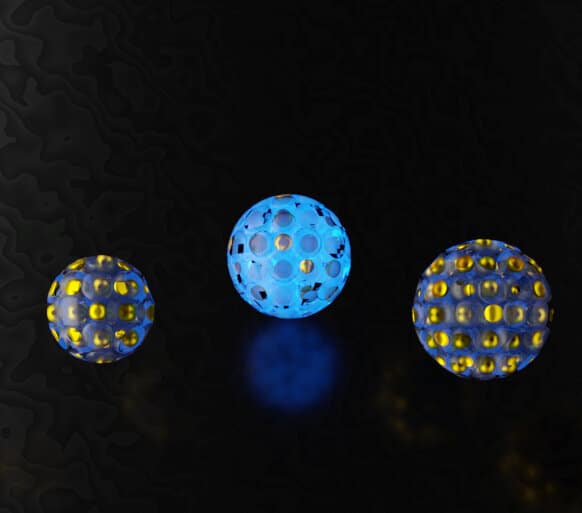The ideal size for a quantum dot

Scientists in Australia have developed an algorithm to calculate the perfect size and density for a quantum dot as a light sensitizer in a solar cell. The research could lead to both higher efficiencies for quantum dot solar cells, and the design of quantum dots compatible with other cell materials, including crystalline silicon.

Quantum dots, crystal structures measuring just a few nanometers, are widely investigated for their potential to boost solar cell efficiencies by acting as a ‘light sensitizer’, absorbing and transferring light to another molecule – a process known as ‘light fusion’ that enables an existing solar cell to absorb parts of the light spectrum with energy lower than its bandgap.
The majority of achievements made with quantum dots to date have been in conjunction with perovskite or organic PV semiconductors, and researchers have struggled to tune quantum dots to absorb the right wavelengths of light, and infra-red light in particular, to be compatible with silicon solar cells.
New research from Australia’s Centre for Excellence in Exciton Science, purports to have developed an algorithm that can calculate the ideal characteristics for a quantum dot to maximize the cell efficiency. They used the algorithm to model to calculate that lead-sulfide quantum dots could set a new quantum dot cell efficiency record; and ensure compatibility with silicon. Details of the work are found in the paper Optimal quantum dot size for photovoltaics with fusion, published in Nanoscale.
More than size
The researchers found that size is a vital factor in the quantum dot’s performance, and that bigger does not always mean better. “This whole thing requires understanding of the sun, the atmosphere, the solar cell and the quantum dot,” explained Monash University’s Laszlo Frazer who worked on the paper. He compares the design of optimal quantum dots for particular light and solar cell conditions to the tuning of a musical instrument to a certain pitch.
Having worked to optimize the quantum dot’s ability to capture light more effectively, the next step for the researchers will be to look at the process where the dot transfers this light energy to an emitter. “”This work tells us a lot about the capturing of light,” Laszlo said “Releasing it again is something that needs a lot of improvement. There’s definitely a need for multidisciplinary contributions here.”
And the group also hopes to start building and testing prototype solar cells complete with quantum dot technology, in order to better understand the performance and application of their theory.

